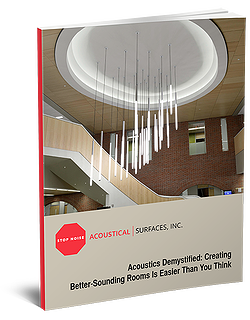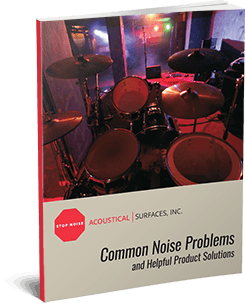4 WAYS TO QUIET A NOISY MACHINE

Is the noise from your machinery causing a disturbance and affecting your productivity? Our range of acoustic enclosures and soundproofing solutions can help you reduce noise levels, creating a quieter and more efficient work environment.
Noise can be a significant issue in machine rooms and industrial settings, but with our expertise in soundproofing, we have the perfect solutions for you. Our high-quality acoustic panels and sound insulation materials are designed to minimize noise transmission and effectively absorb sound waves. Whether it’s loud noise, vibrations, or airborne noise, our soundproofing materials provide exceptional noise reduction, ensuring a peaceful atmosphere.
Product Testing & Information

Treat the Room
For top-quality noise control, our soundproofing experts recommend utilizing acoustic panels, acoustic foam, and sound-absorbing materials such as fiberglass.
- Maximum Noise Reduction: 6-9 decibels (30-40% decrease in loudness)
- Advantages: No inconvenience to workers
- Disadvantages: Almost all of the room must be treated regardless of the size of the noise source.
- Top Products include:
Treat the Wall Behind the Noise
Address the noise at its source by targeting the wall behind the machine.
- Maximum Noise Reduction: 1-2 decibels if noise source sprays noise out into room, 4-6 decibels if noise is sprayed directly onto wall (such as noisy vent on the back of a machine).
- Advantages: No inconvenience to workers
- How much QFA? Treat the wall behind the machine with about twice the square footage of the “noise shadow” of the machine on the wall.
Build a Barrier or Partial Enclosure
For superior noise reduction, constructing a barrier or partial enclosure around the machine is highly effective.
- Maximum Noise Reduction: 6-15 decibels
- Advantages: Very good noise reduction
- Concerns: May have to incorporate view windows for visibility and/or sliding panels for access.
- What Size? At a minimum, 8′ high. Typically they should be double the height of the noise source.
- “BSC” or “BBC” sound absorption/noise barrier composites
Build a Complete Noise Enclosure
When maximum noise reduction is your priority, a complete noise enclosure is the ideal solution.
- Noise Reduction: Up to 20-30 decibels
- Advantages: Maximum noise reduction
- Concerns: May have to incorporate view windows for visibility and/or sliding panels for access as well as ventilation baffle(s) for air flow.
- “BSC” or “BBC” sound absorption/noise barrier composites.
Say goodbye to the persistent machine noise that hinders productivity and focus. Our noise reduction solutions empower you to create a harmonious work environment where noise pollution becomes a thing of the past. Contact our experts today to explore our wide range of soundproofing materials and embark on your journey towards a quieter, more productive workspace.







